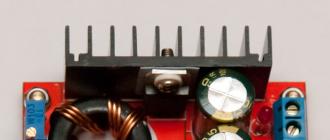Indeed, such devices exist, and in several ways at once. After all, by what parameters do devices power a laptop? First, it is stress. Secondly, the current strength. And finally, the shape and size of the plug (connector) inserted into the laptop. On the basis of that, the solutions are different.
The first option is not very common, but for some owners of laptop-books is still possible. This is a special adapter suitable for a specific mobile computer - and only for it. Connecting it to the cigarette lighter socket, you get the desired, predetermined constant voltage and the desired amperage. And the type and size of the connector fit only this laptop. That is, to connect another laptop to this adapter will not work. The connector will not work, the voltage with current will also vary.
There are not many such converters. And finding them is not so easy, because sellers, as a rule, prefer more universal (and therefore more salable) solutions. And of course, there are such solutions.
If the adapter described has an output of a predetermined voltage and amperage, then the universal power supply devices can vary them within fairly wide limits. The value of the resulting voltage can be set either by jumpers or step rheostat. By inserting the re-label into the socket with the inscription 15 V. you get the same 15 V output, and the current is automatically adjusted depending on the input resistance of the laptop. However, some such devices do not have pereuchka. In this case, both the current and voltage are set automatically by the converter itself.
The kit includes several types of replaceable connectors, usually from five to eight, which (according to manufacturers' assurances) fit 85% of existing laptops. The figure of 85% causes me great doubts, but still the chance that one of the connectors will fit your laptop is quite large. Naturally, with the purchase of such a device, it is necessary to try its connectors for compatibility. On the eye to determine the coincidence of sizes is almost impossible.
Of the minuses of DC / DC converters (i.e. from constant current to constant), versatility can be noted only in relation to laptops. If you need to connect only a laptop computer to a car battery in field conditions, then everything is in order, such an adapter will suit you. But if there is a need to connect another device, it makes sense to pay attention to DC / AC converters, i.e. from DC to AC.
These are truly universal devices. By connecting such an adapter to a car battery (either through a cigarette lighter or directly to the battery terminals), you get a standard 220V output. Next, your work: you can power up the laptop (by turning on its power supply unit into the adapter socket), or charge the cellular phone, and you can connect a conventional TV or, for example, a printer. With the appropriate output power, you can even have a working submersible pump at your dacha, even if there is no power supply.
Such adapters differ in power. The table shows the main averaged characteristics of DC / AC converters.
|
Options |
Meanings |
|||||
|
Output power. W |
50 |
80 |
100 |
150 |
300 500 1000 12 |
00 1800 2500 |
|
Input voltage, V |
12 or 24 |
|||||
|
Output Voltage, V |
115 |
100/115/220/230/240 |
||||
|
Peak power, W |
100 |
150 |
200 |
300 |
600 1000 2000 24 |
00 3500 5000 |
|
frequency Hz |
50 or 60 |
|||||
|
Output waveform |
Modified Sine Wave |
|||||
|
Current consumption without load, A |
0,1 |
0,1 |
0,1 |
0.2 |
0,4 0.6 0.8 1 |
0 2,0 2,5 |
|
Efficiency |
90% |
|||||
|
Maximum current, And |
10 |
10 |
20 |
20 |
30 3072 3073 30 |
74 3076 4078 |
|
Average adapter weight, kg |
0,28 |
0,28 |
0,45 |
0,48 |
0.8 1,1 1,95 2 |
4 4,2 6.0 |
|
Battery Discharge Alarm |
there is |
|||||
|
Overload protection |
there is |
|||||
|
Protection against incorrect polarity |
there is |
|||||
|
Forced cooling |
Not |
there is |
||||
|
Connecting directly to the battery |
Not |
there is |
||||
|
Lighter connection |
there is |
Not |
||||
As can be seen from this table, all such adapters have a battery discharge signaling. When lowering its charge to 10.2-10.5 V, they begin to emit a beep. With a further lower voltage, the converter automatically shuts off (about 10 V).
Forced cooling refers to an integrated fan. It is natural that during operation the adapter heats up. But if for low-power ones this is not so significant (heating is too low), then, starting from 300 watts, heating becomes a problem. Therefore, all powerful converters have a built-in fan that cools them during operation. The cases of all such devices are made in the form of a radiator in order to promote better cooling.
Also, all powerful adapters do not have a connector inserted into the socket of the cigarette-holder. With increased current strength (and, accordingly, increased power), the fuse socket, like the fuse, will simply melt. Therefore, such high power devices are connected directly to the vehicle battery. The exceptions are 300 watt converters. If the power of the connected device does not exceed 150-180 W, then you can connect the adapter to the cigarette lighter socket, if higher, then only to the battery terminals.
There is one restriction for all types of converters: you can work with it either from a battery (the car engine does not work) or from a generator (the car is running). When the ignition is switched on, the adapter must be turned off, since the increased currents may damage it (or burn the fuse).
Summary
* There are several types of adapters through which a laptop can be connected to a car battery.
* If possible, you can purchase a DC / DC converter specifically for your laptop. In this case, in addition to a specific mobile computer, nothing can be connected.
* There are universal DC / DC adapters, in which there is the possibility of selecting the output voltage and current, as well as the selection of the connector for connection.
* The most versatile device of this kind can be considered a DC / AC converter. At the output, it produces standard 220 V, t. S. You can connect any device that uses a standard electrical outlet to the outlet.
On a trip to the Caucasus, we, like all the tourists, took a bunch of electronics with us: 2 phones, a reflex camera, a soap dish, 2 zhpsa (car and tourist), charging for lantern batteries, a portable radio station and a laptop. I agree - there is a lot of superfluous, but experience is the son of difficult mistakes :)
The biggest problem of all this junk - it needs to be charged. Almost all modern devices are powered either from 5 volts or from 12, and the benefit in the car is both voltages. But there are also relatively problematic devices: a laptop and a SLR, which need 220V for native charging, or a 2S lithium charge controller from 12 Volts. Rarely, which laptop now runs from 12 volts - these are ancient netbooks that required such a voltage. Modern almost all are very voracious, want to eat from 18-20 volts and eat, as a rule, up to 3 Amperes.
Here I have just such an assistant navigator and lies - Itronix IX-250. This is a truly unkillable brick, which can be used as a stool, a stand for a jack, a sandtrack, a board for cutting vegetables, and then open the card in it and move on.
Actually, this comrade needs those 19B @ 3A which are not normally found in the car. Many people do it simply - they buy an inverter, which they plug into the cigarette lighter, into the inverter the usual mains charging is three meters long, and there is already a laptop. The following transformation is obtained: = 12V - ~ 220V - = 19V.
This design has the only advantage - through the inverter you can charge not only a laptop, but also other things, such as the same DSLR.
However, the minuses are much more:
sooo long beard design that is on a long trip, and even more so at competitions will constantly interfere under your feet.
the efficiency of this chain tends to zero :) on each converter (inverter + bp laptop), up to 10-30% of energy is simply lost to heat the air.
i do not allow internal prejudices and technical education to buy an inverter with a modified sine, and a good one with a pure sine costs a lot of money, and buying it only for a laptop is very expensive.
the quality of inexpensive inverters leaves much to be desired, and it is dangerous for a laptop.
Having considered the possible connection options, I stopped at the boost DC-DC converter. That is, we will raise directly the permanent 12 (14) In the on-board network to the constant 19V. Such a converter can be bought ready-made, but those that were presented in local stores did not inspire confidence at all: a non-ventilated plastic case, thin wires, shaky plastic ... What can I say - I have this at work, like a kettle and it starts to smell.
I decided to try to kill a similar thing myself. I won’t be cunning - I didn’t count, and I didn’t pay a fee, but I took advantage of the finished one
150W Boost Converter DC to DC 10-32V to 12-35V
Input voltage: 10-32V
Output voltage: 12-35V
Poppy. output current: 6A
Max. input current: 10A

In the open form, as you understand, it is impossible to use it in the car, because it would be nice to find a skin for the board. For example:

The converter first needed to be slightly finished: to bridle electrolytic capacitors with ceramics to filter out high-frequency noise, and to correct the feedback of the controller's pins as advised.
Taking a board and a case, it becomes obvious that the board with the radiators will not fit into the box, and without it, too. In order to cram in nevpihuemoe it was decided to evaporate the radiators, power elements (diode assembly and mosfets) and cut the board to the desired size on a grinding machine.

After cutting off one end, the track had to be restored with a wire, and taking advantage of the opportunity, the LED and terminal blocks fell out - they are not needed there. The legs of the power elements had to be bent so that the heat dissipating part was flush with the new edge of the board for good contact with the new "radiator".

The diode assembly and mosfet were planted on thermopaste through a thermo scissor directly onto the aluminum housing serving as a radiator and securely fastened with a screw.
The GX16-4 was chosen as the connector - it is an “aviation” 4-pin connector that can withstand currents up to 15 amperes on the passport. For two pins, I let the incoming voltage, and for the remaining two - leaving the increased. The advantage of this connector is its relative tightness and reliable fixation of the plug.
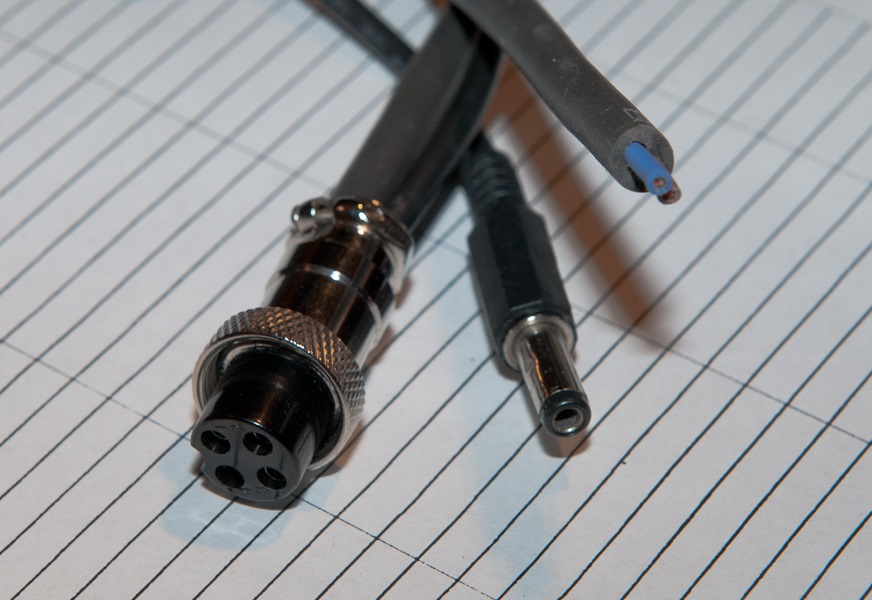
Anticipating the harsh operating conditions, I also took care of the cables: the input was taken as a heat-resistant multicore 2 * 1mm2 double silicone shell (Basoglu SIMH). Honestly, I didn’t even expect such a quality - the cable is very soft, pleasant to the touch, inside the outer sheath of the wire in talc, soldered perfectly. As a weekend, I used the usual notebook coax. As a rule, these are very wear-resistant cables with a good cross-section. I have long been using such for crafts, where the cable will have a constant load. The plug for the laptop was soldered from what it was (temporarily).
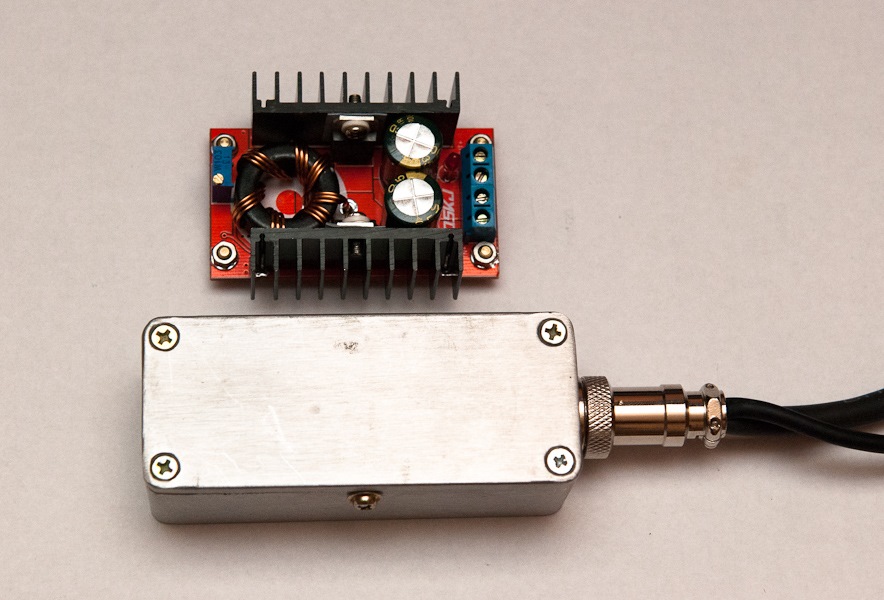
Both cables with a little tweaks embedded in the connector, and put a spring on a thin cable - this design greatly extends the life of the cables near the connectors, because greatly increases the bend radius and prevents creases. Not superfluous would be a ferrite ring on the output line for interference suppression.
It would be more convenient, of course, to use two sockets in the case - on the input and on the output from different sides. It is more convenient in installation, and the “through passage” design is more convenient in operation. But each pair of dad-mom locally costs 200 rubles, saved.

If desired, and with little effort, the construction can be made completely airtight, because both the housing and the connector already have a reserve for this.
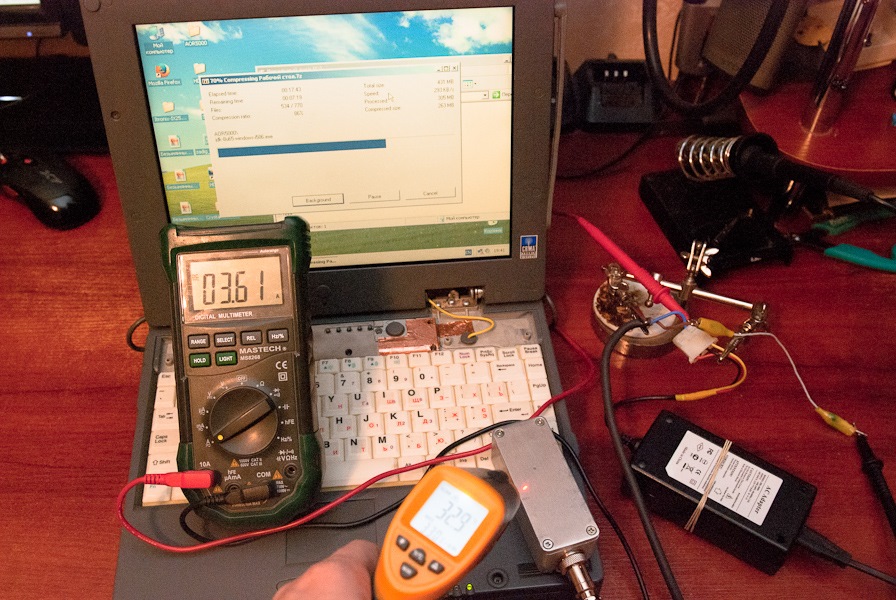
With my laptop I was able to load the converter only at 3.6A @ 11.8V at the input, and in 20 minutes of work on such a current, the case warmed up a little more than the surrounding temperature. Pyrometer shows 32.3 ° C. It is not entirely correct to measure the temperature of the aluminum box with the pyrometer, but even after painting the area with a black marker, the readings did not change.
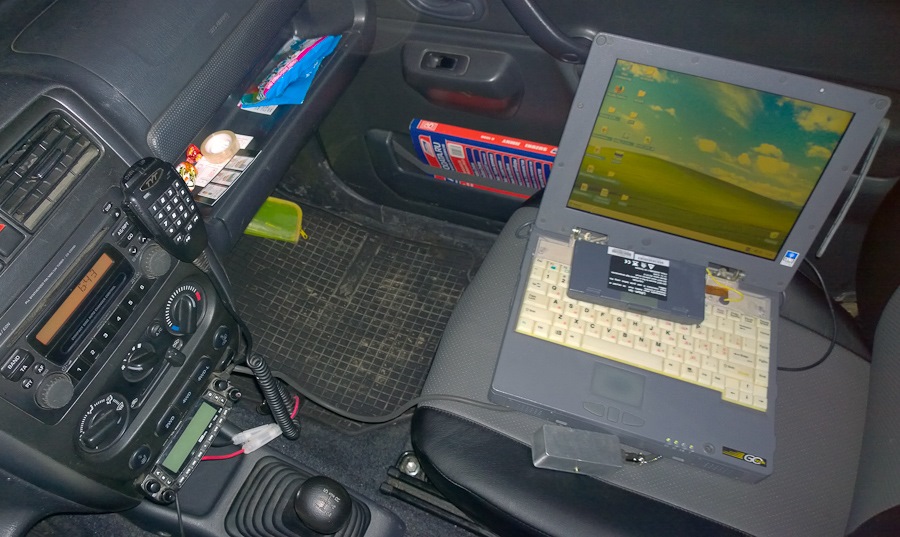
This is how the whole structure in the car looks like, a laptop without a battery to confirm the work. Half an hour of work at idle did not affect the temperature of the transducer, especially from 13.8V of the on-board network it will work easier than 11.8V at home.
The budget was about 1000 rubles, considering that half of the parts were taken in China. If you take everything locally - you can safely multiply the prices by two.
It is necessary, of course, to drive the device under a good load, before advising it to someone else, but it seems that it suits me one hundred percent.
A bit of history
Computer diagnostics of cars already has quite a solid history, exceeding the 35-year period: in 1980, General Motors introduced on a commercial basis the diagnostic interface ALDL for monitoring the condition of all vehicle systems, as well as the ECM protocol used for diagnostics tests of the control modules of the propulsion unit.
Cadillac Fleetwood 9th generation. Took here: drive2.ru/r/cadillac/935054/
In the early 1990s, a universal diagnostic protocol for motor vehicles was created in the United States: OBD (On Board Diagnostic), and since 1996 its upgraded version of OBD-2 has become technologically indispensable for US cars and Canada.
Since 2000, the European version of this protocol (EOBD), the EU Directive (98/69) has been introduced into the EU autos produced and sold on a mandatory basis for gasoline vehicles, and since 2004 for diesel ones.
Japan introduced its own version of the protocol (JOBD) in 2003 for all its machines.
That is, now, generally speaking, the vast majority of even very old cars (up to 20 years old) are adapted to the computer diagnostics system. And for these historical milestones, you can assume the presence or absence of this adaptation in a particular car.
Electronic control unit
Modern vehicles are equipped with an electronic brain that integrates diagnostic sensors and control modules of all systems and subsystems of a vehicle, through which you can monitor the current state, make performance predictions, adjust various technical parameters and troubleshoot some problems.
Such a center is called an ECU (electronic control unit) and, for technical monitoring or making any changes and corrections to the auto system, an external diagnostic interface is connected to it.
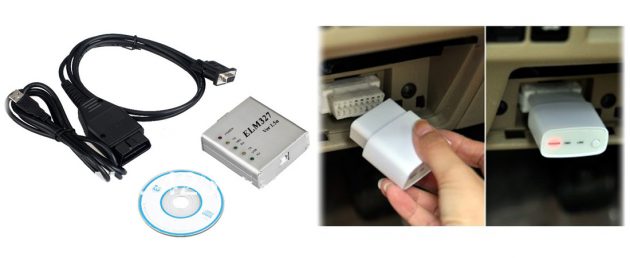
What he really is?
Usually it is a bunch of special controller (OBD-2 protocol specifier), some kind of processor for data processing, special software and means of connecting all of this. Now I will explain to you in more Russian, what is the point, presenting a general concept:
- The computer of the machine must have an external output-connector, to which a key element for such diagnostics is connected - an OBD-adapter (scanner), which converts and unifies the data flow from the computer controller so that they can be read by external plug-in devices.
- Various diagnostic devices, both special and general, can act as a data processor: professional diagnostic scanners, smartphones, tablets, laptops and desktops. Under the platforms of these devices (iOS, Android or Windows) there are relevant diagnostic programs.
- As a means of connection, you can use a regular computer data cable (with various adapters, if necessary) or wireless Wi-Fi and Bluetooth protocols.
This information has given you a very general idea of the principles of computer diagnostics. Now you can understand it in more detail.
Diagnostic capabilities
Functionally, computer diagnostics conducts electronic inspection of vehicle systems and displays the data obtained in the form of graphical indicators, as well as in the form of error codes, with the help of which it is possible to correct breakdowns or prevent them.

Even at the initial level, mastering the skills of computer diagnostics you, among other things, will be available:
- Quality control of the maintenance;
- More accurate planning of auto repair work and budget savings;
- More precise determination of the state of the machine
- Independent determination of the nature of faults when the lamp signal "Check Engine".
Of course, even for such a short list of opportunities, motorists need some basic skills:
- The ability to work with a computer and software at the level of a regular user;
- Basic understanding of electronic and electrical systems of cars in relation to the brand / model;
- The ability to work with Internet directories and databases of DTC errors to correctly decipher the incoming data.
However, even if your knowledge is very small, you still get a lot of valuable and understandable to any driver information simply from graphical indicators of programs. And all this can be done absolutely free of charge at any time and any place, promptly reacting in accordance with the data obtained.
Self diagnostics cars through a laptop
What you need to diagnose
Now let's look at what you need for computer diagnostics.
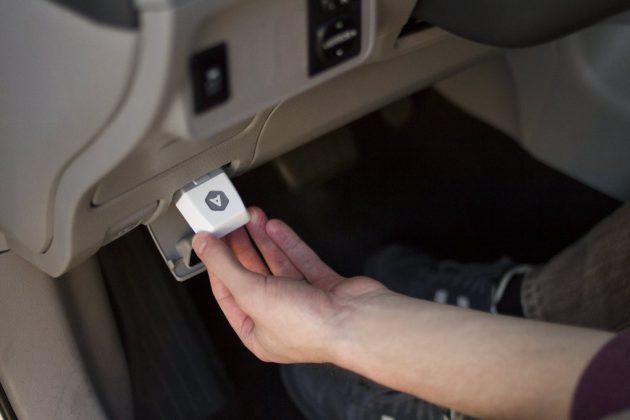
The list is approximately as follows:
- Computer - in our case it will be a regular laptop, but it is desirable that it has built-in or external Wi-Fi and Bluetooth modules;
- Adapter specifier (scanner) - in our case, take the easiest and most popular "Smart Scan Tool", which the ;
- Specialized diagnostic software - it is very much and the choice depends on personal preferences, as an option, you can try out several programs and choose the one you like;
- Internet databases with data on deciphering the displayed errors - there are enough of them in the network for all models;
- Interface (computer) data cable - you may need it to directly connect to the car port only if you have problems with Wi-Fi and Bluetooth access on your laptop.
A laptop
For a quick express check of the car’s systems in field conditions, the smartphone is more simple and convenient, not a laptop, but only the latter will allow the driver to master diagnostics at a serious level, with the possibility of installing further professional diagnostic software.

There are no special requirements for the notebook itself, apart from the desirable availability of a standard COM port (RS-232 connector jack for a data cable) and any wireless access unit - Bluetooth is the best choice for this, and not Wi-Fi, since Bluetooth access is most popular scanner adapters.
Of course, you can check the machine and on a stationary PC, but the laptop allows you to do it on the go, and it is just more convenient as a small, but powerful and self-contained device.
If something is not in your laptop: a COM port or Bluetooth / Wi-Fi, then adapters will solve the problem, as well as external wireless modules. Here I would advise not to save on the Bluetooth adapter and choose a device from the mid-price segment, since the low-end models are low-powered and often refuse to see the mating devices.
Scanner
The adapter-scanner has the form of a small plug-in device, containing the main chip-circuit, as well as the blocks of connectors, data transmission, signal and sometimes the control panel.
The scanner adapts the information flows from the onboard computer to their transfer to the usual one, where it is processed and displayed in a readable form.

Adapters are different: some, usually professional or semi-professional service and dealer scanners, are able to work only with some specific brands of cars. For example, the scanner “Vasya-Diagnost” (with humor, the developers turned out to be ;-)) is intended only for the machines of the concern “VAG”.
But we are more interested in multi-brand adapters that can work with many brands of cars. There undoubted primacy, both in terms of versatility and in terms of price / quality ratio, is kept by the OBD-scanner "Smart Scan Tool"which is based on the chip scheme ELM323 / 327.
This OBD-scanner is adapted for almost all modern cars, up to the age of 20 years (starting from the 1996 release). "Smart Scan Tool" is sold at a price of around $ 30 and provides the ability to monitor in real time from all sensors, fix and correct errors, as well as customize the entire system of the machine.
On this video you can watch the work with the ELM-327 OBD-scanner:
Programs
The software usually comes with an adapter, but it can be downloaded online.
The functionality of the programs can be very different. Here is some of what most applications have for general presentation:
- Deriving the basic parameters and operating conditions of all vehicle systems;
- Read DTCs;
- Decoding error codes;
- Erasing errors after eliminating their cause;
- Determining and commenting on the error status;
- Keeping all sorts of reports, logs on faults and maintenance.
As I said, there are a lot of similar programs.

These are the ones that have gained the most popularity among motorists:
- “Uniscan” is a series of software used for diagnostic testing of virtually any car of major manufacturers (USA, EU, Japan, Korea) not older than 2001: Ford, Chevrolet, Nissan, Toyota, KIA, Daewoo, BMW, Opel, etc. .
- Motor Tester is a very powerful semi-professional program with which you can diagnose many Russian-made cars (VAZ, UAZ, GAZ, etc.).
- "Vagcom" and "Vag Tool" - two programs for the diagnosis of machines related to the so-called. VAG group (Volkswagen-Audi group). Allows you to work with brands such as Audi, Seat, Volkswagen, Skoda, etc.
How to diagnose a car through a laptop
All that is necessary for computer verification you already know. Now it remains to describe the procedure itself.
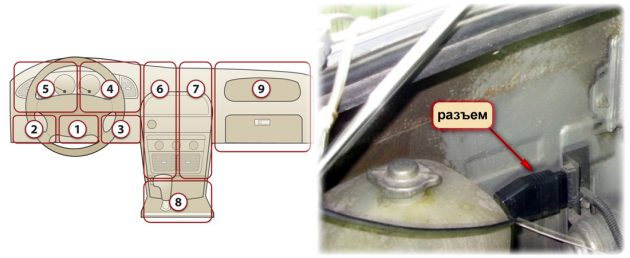
Here's what you need to do step by step:
- Prepare everything you need and collect in the car (laptop, scanner).
- Turn on the laptop - one of the autodiagnostics programs must be installed on it.
- Find the diagnostic connector in the car - it may be in different places (throughout the dashboard, as well as under the hood), but usually it is located in the area of the steering column.
- Insert the scanner into the slot and turn it on (if required) - the connection indicator will light up;
- Check the correctness of the Bluetooth connection and pair the devices - the ready indicator will light up;
- Open the autodiagnostics program and connect the data stream from the car to it. If everything is correct, the program will signal that it sees the car and will start processing the incoming data, after which it will display the main parameters.
- Working with the program interface, set the commands to check, configure or correct what you need, read the data.
- If you need more in-depth verification, save the error codes to a file and analyze them through an Internet resource, for example, through this directory, or through this service.
The check on the basic parameters will not cause any difficulties for anyone, especially when using OBD Scanner ELM327, but for deeper diagnostics, it is necessary to study well the possibilities of the autodiagnostics program and gain some experience.
- Keep in mind that the length of the data cable in autodiagnostics matters - the shorter the better. Often, with a cable length of 5 m, the scanner does not work or does not work correctly.
- Before using the purchased scanner adapter, carefully read the instructions for its use.
- When carrying out diagnostics, connect and configure the scanner and laptop when the ignition is turned off - turn it on after all the settings, because otherwise there is a risk of damage to the on-board computer.
Conclusion
After reading this introductory article, you realized that the era of simple mechanical transport is approaching its end and full computer maintenance is impossible without computer diagnostics. The good news here is that almost any driver has the opportunity to do such a check on their own, saving their money and time.
Maybe someone has already mastered the self-diagnosis of the car through a laptop and has some practical experience? Then you can put it in the blog comments, for which visitors, I am sure, will be grateful to the author.
At this I say goodbye to you to the following publications. Do not ignore the convenience of subscribing to a blog - with it you will not miss important and interesting articles. Press social buttons: there is not a lot of good information in the network, someone for it will definitely be grateful to you.
For those who are traveling for a long time, it is important to know whether you can charge the laptop in the car. Yes, it is possible to do this, you just need to know some subtleties. The procedure is carried out from the cigarette lighter, and because of this you do not need to wait until the equipment is charged from the outlet of the house.
How to charge the laptop in the car? This process will not be difficult for any computer owner.
Cigarette lighter charging
Car adapter for a laptop is considered an important thing for a business person, especially for someone who constantly drives. The equipment is discharged at any time, and the outlet is not everywhere. So, to constantly have access to a computer, you must use modern tools.
How to charge the laptop in the car from the cigarette lighter? Connection to the named source will be sufficient for the operation of your equipment. But the voltage of the device is not 220 V, but less. Therefore, you need to use a special adapter that performs voltage conversion and supply of electric current with the required parameters.
Operated from the mains, also has such a device. The network parameters are not suitable for the type of current that is required by the power supply; therefore, its main component is the converter. The adapter has a similar principle of operation.
Charger Features
Chargers differ in characteristics. The rear panel of the vehicle contains information on which output voltage is suitable for the vehicle. As a rule, this indicator is equal to 15-25 Volts, and the current strength is 4-5 Amps. This information must be considered when choosing an adapter.
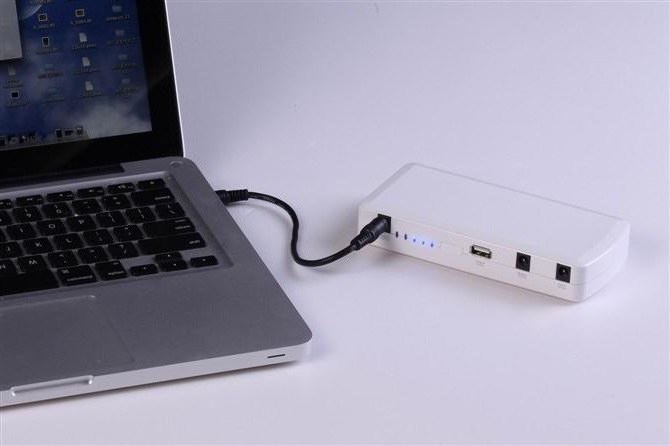
Power supplies have different connectors, because each technology has its own type of output. Therefore, it is advisable to choose a device native to your laptop manufacturer. Another characteristic is the cigarette lighter properties. For passenger cars, the output voltage is 10-12 volts, and for a truck - 25 V. Chargers are not suitable for every technology.
Is it harmful?
Not everyone knows that in the car you can charge a laptop. It won't hurt the car, but the laptop? How does this affect the technique?
It is believed that you should not connect a laptop computer to the cigarette lighter, since the power supply is quite different when compared to a conventional power supply network. This is true, but it is because of this that the adapter is used. And if you choose the right device for all the properties, then you can easily carry out charging the laptop when traveling. And on the road, no problems with this will not appear.
Charger specifications
How to charge the laptop in the car, it is better to consult a specialist. To do this, it is advisable to contact the electronics stores. They sell automotive power supplies from different manufacturers, suitable for specific types of laptops. Each charge has its own parameters, and before they go on sale they are tested.

We continue to figure out how to charge the laptop in the car. To recharge, you need to use a car inverter - it will serve in the car as a 220 V socket for your laptop. It, in principle, can be used for any technology. In general, an adapter connected to a laptop computer via a cigarette lighter is considered the most convenient option for recharging, as it consumes little energy and is safe.
Standalone device
If it is not quite clear how to charge the laptop in the car, then you should be familiar with the principle of operation of the transport adapter. Its power is kept within 150 W. Therefore, it is necessary to choose such a device that is protected from overload. Charging occurs when the ignition is turned on, that is, when the engine is running, because when the converter is connected to the cigarette lighter, the battery quickly sits down.

You need to purchase a standalone adapter with the same number of Volts and Amps as on the power supply of the equipment. And even better, as we said, buy a device of the same brand as the computer. The process of charging lasts about 3 hours, while the phone can be charged in an hour.
Purchase
Often in the assortment of specialty stores you can find universal devices that help solve the problem of how you can charge the laptop in the car. In the named set there are usually from 4 adapters. When buying, you need to check whether there is a suitable connector. The cost of universal devices is in the range from 500 to 2,000 rubles.
But whatever adapter you choose, it connects in the same sequence - one end of the charging is connected to the cigarette lighter and the other (with a suitable adapter) to the laptop.

If the store does not have a device with a suitable connector, then you should contact the dealer network of the manufacturer of your laptop. But the original charge is more expensive - about 2,000-2,500 rubles.
When choosing, pay attention to some nuances:
- Fastening wires. At the site of the connection of the wire and the connector must be protected. If it is absent, then it is in this place that the wire will break.
- Wire length In all cars, the cigarette lighter is in different places. Therefore, it is advisable to buy a charge with a long wire that can be adjusted.
It should be borne in mind that high-quality devices have special protection against short circuits. The remaining characteristics do not matter, therefore, in appearance, design and weight, the product can be any. If you buy a suitable charger, you can always infect a laptop in the car. This is very convenient, because the technique can work on the road.




